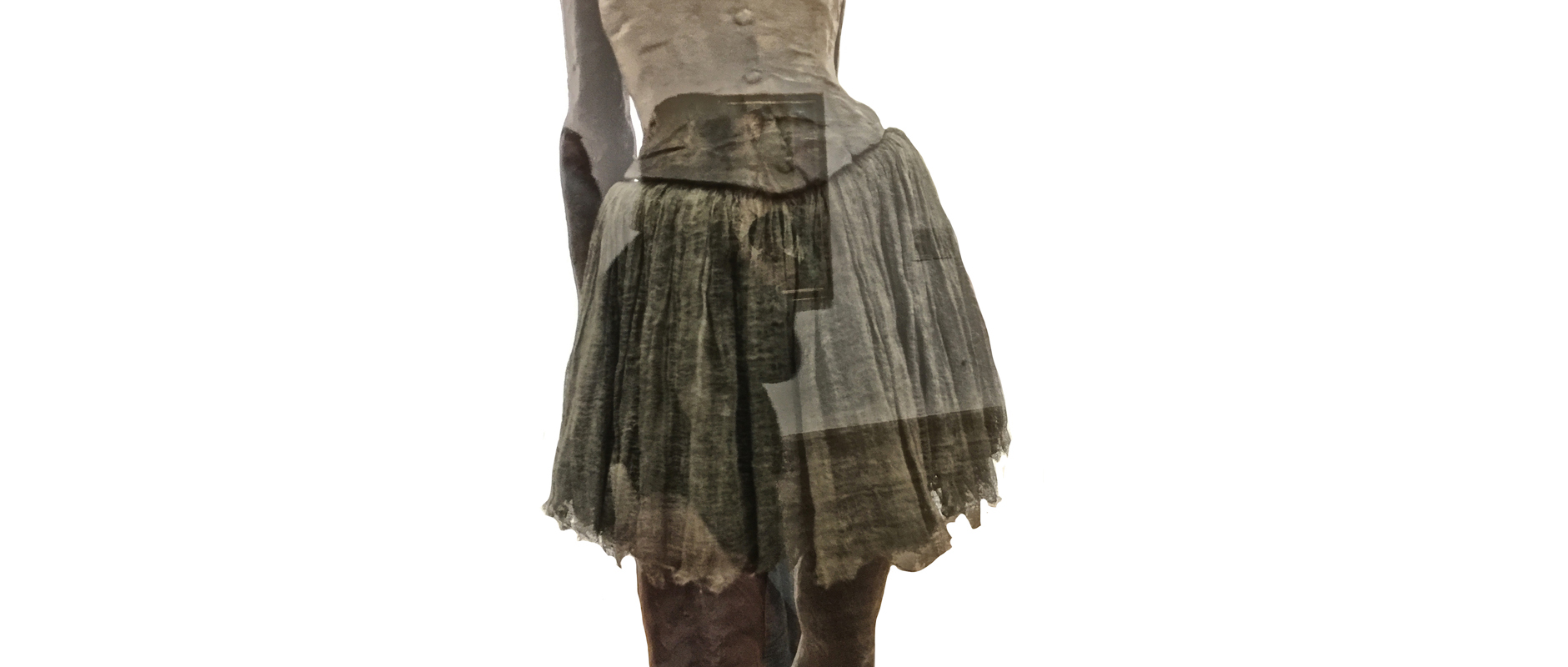Here is a photo of the tutu on Edgar Degas’ sculpture “The little dancer of fourteen years” being shown here at the Fitzwilliam Museum in Cambridge in 2017 marking the centenary year of his death.
Twenty-eight copies of the sculpture are in different collections all over the world.
The tutus worn by the bronzes vary from museum to museum.

The knitting of the tutu, using copper wire, took much longer than I expected and so, to speed the process, I knitted at every opportunity in any location where I was likely to be sitting down with nothing else to do but knit. I have knitted on the underground, on trains, in cafes, the cinema and everywhere peoples’ attention has been drawn.
I knitted many rectangles of varying thickness of the wire which I hammered into ‘gathers’ before sewing them into place. My biggest dilemma was whether or not to make the tutu removable but I found that the weight of the copper tended to make the dress slip down after a while so, in the end, I decided to sew it into place on the body.
The making of the tutu has been important for me because all 28 tutus have been made individually with no one of them the same. I found on the internet a video of a conservator at the Metropolitan Museum of Art who had replaced a tutu for their little dancer and it was quite fascinating because he and I had shared some techniques although his tutu was made of cotton tarlatan.










